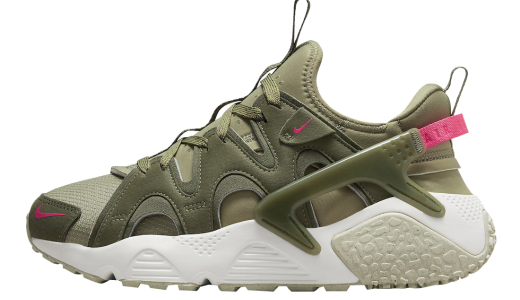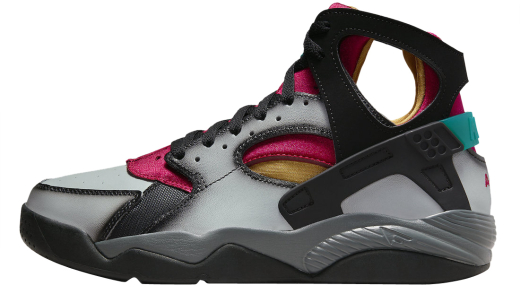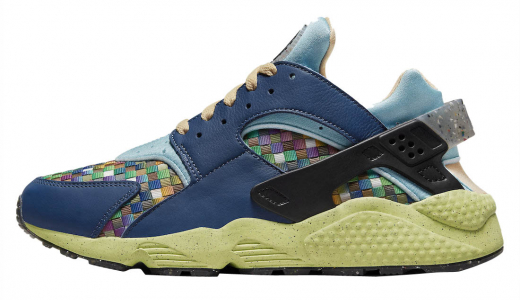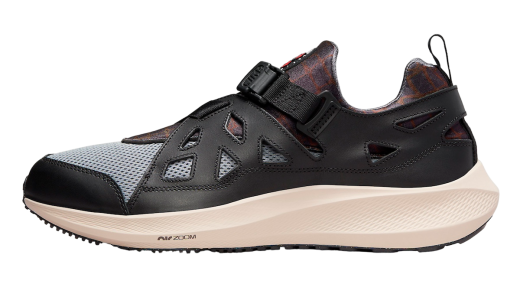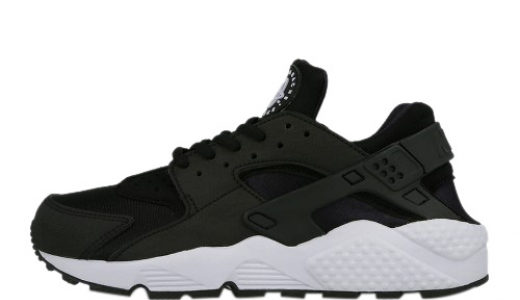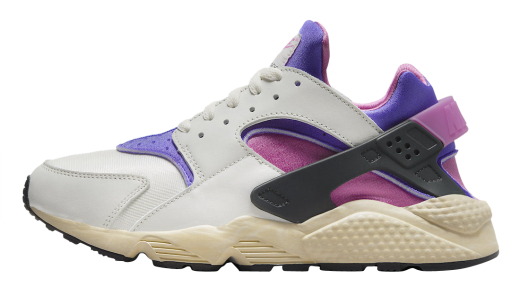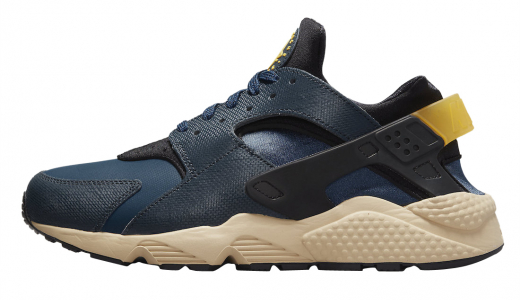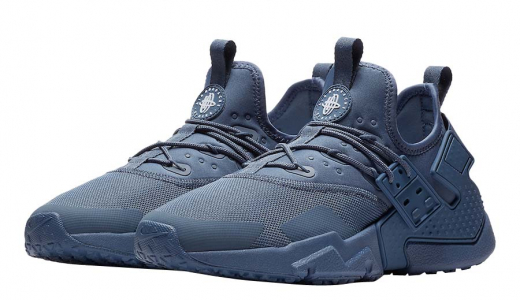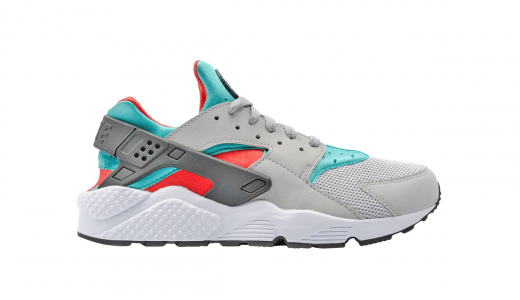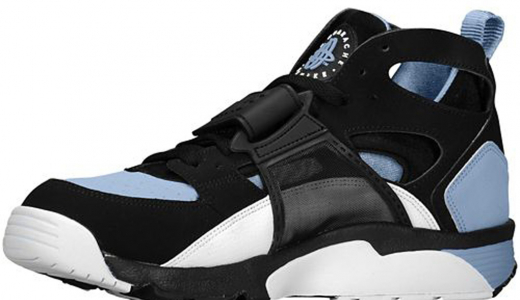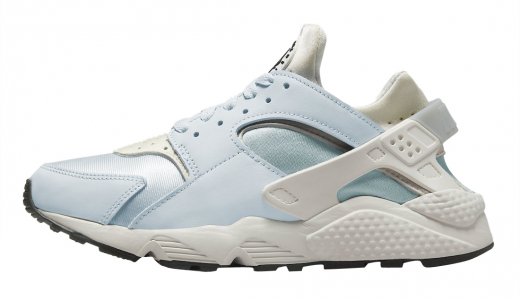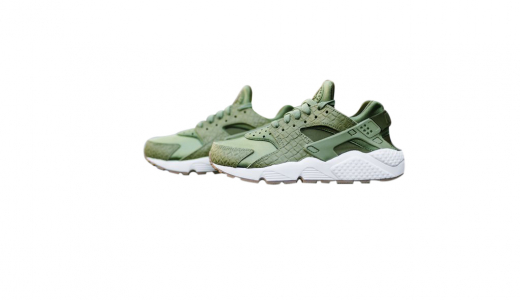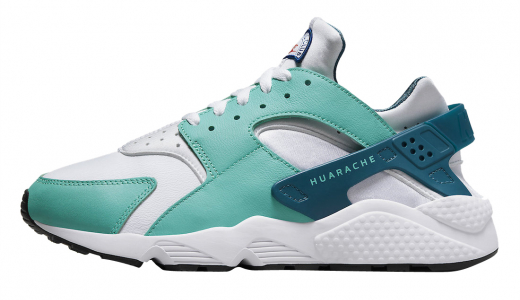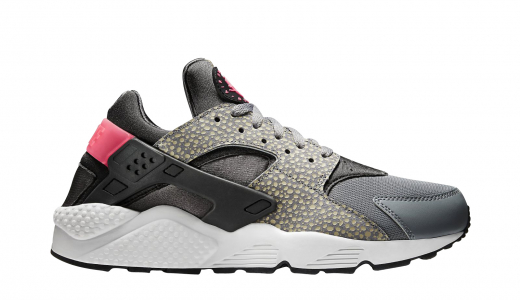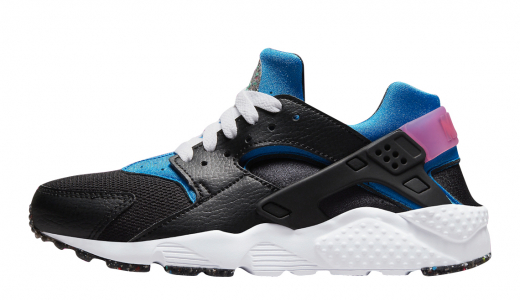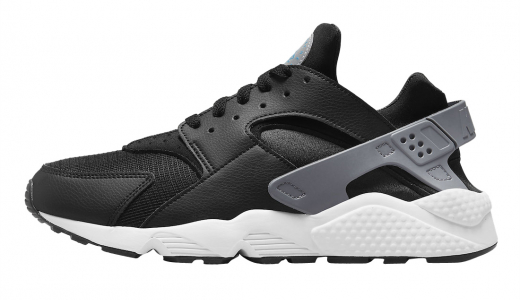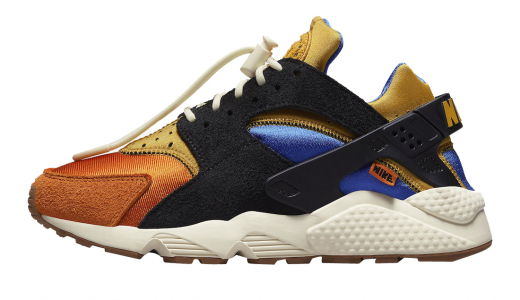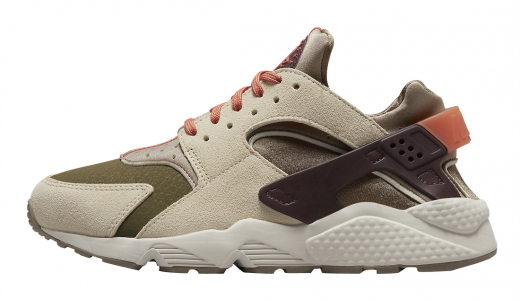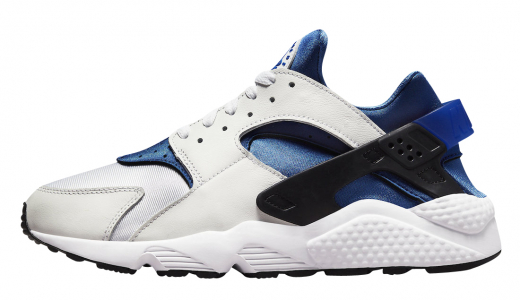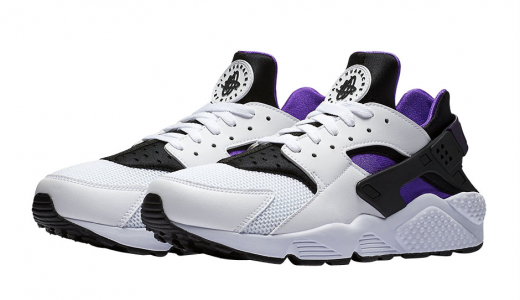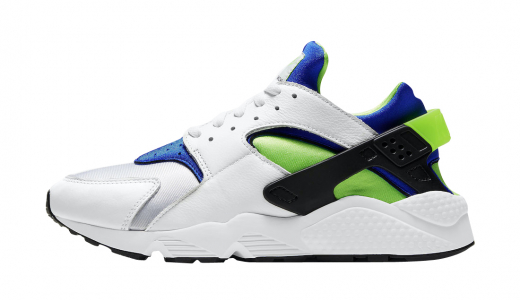Nike Air Huarache
The Nike Air Huarache is a line of sneakers that revolutionized the design and functionality of athletic footwear when it debuted in 1991. Created by renowned Nike designer Tinker Hatfield, the Huarache stands out for its inventive aesthetics and unparalleled comfort. Drawing inspiration from Native American sandals and neoprene water-ski boots, Hatfield crafted a shoe that incorporates an exoskeletal design ensuring maximum support with minimal materials. The neoprene sock-like upper offers a snug, adaptable fit that molds to the foot, while the iconic heel strap ensures stability. The shoe's lightweight and flexible construction have made it a favorite among both athletes and casual wearers, maintaining its allure over the decades.
The range of colorways and limited editions released through the years has contributed to the enduring popularity of the Nike Air Huarache. This adaptability in style extends beyond athletic performance, as the sneakers have also cemented their place in streetwear culture. Fashion-forward consumers appreciate the Huarache's ability to complement a variety of wardrobes, from casual wear to more eclectic ensembles. Its continuous reimagination and relevancy in modern fashion trends highlight the sneaker’s enduring legacy. With periodic updates and new iterations, the Nike Air Huarache remains not just a testament to innovative design but a mainstay in the sneaker community.
History of Nike Air Huarache
The Nike Air Huarache is a testament to innovative design and the evolution of athletic footwear. Introduced in 1991, this iconic sneaker's history intertwines with cutting-edge technology, cultural significance, and a legacy that continues to influence contemporary sneaker culture.
Genesis of the Idea
The late 1980s and early 1990s marked a period of significant innovation for Nike, led by visionary designers like Tinker Hatfield, whose creativity had already brought forth groundbreaking models such as the Air Max and the Air Jordan series. Among Hatfield's many innovations, the concept of the Nike Air Huarache stood apart due to its radical departure from traditional sneaker design.
Hatfield drew inspiration from neoprene water-skiing boots, which offered a snug yet comfortable fit. The fundamental idea was to create a shoe that provided a “sock-like” feel, enhancing the natural movement of the foot. This was before minimalism in footwear became a fully entrenched trend, making the Huarache's concept avant-garde for its time.
Development and Design
The design process for the Air Huarache was not straightforward. Hatfield, along with colleagues Mark Parker and Bruce Kilgore, faced significant internal skepticism at Nike due to the shoe's unconventional aesthetics and construction. The absence of a traditional structural rear, which relied on neoprene and spandex for fit and support, seemed too radical.
Despite the doubts, Hatfield's persistence paid off. The Huarache featured a minimalistic approach, with its outer skeleton providing structure, while the inner neoprene sleeve offered a snug fit that hugged the foot. The shoe's name was inspired by the huarache sandals worn by Mexican farmers, which similarly provided a basic but effective means of foot protection.
Features and Technology
The Air Huarache incorporated several distinctive features, most notably: - **Neoprene Inner Sleeve**: This provided a glove-like fit, promoting flexibility and comfort. - **Exoskeleton**: The external structures, including synthetic overlays and thermoplastic hardware, provided stability without compromising the lightweight design. - **Air-Cushioning System**: As part of Nike's broader Air series, the Huarache integrated an Air cushioning unit in the heel, ensuring impact absorption and additional comfort.
These features combined to meet the needs of athletes across various disciplines, proving that the integration of new materials and designs could revolutionize performance footwear.
Market Release and Reception
Upon its release in 1991, the Nike Air Huarache earned acclaim but also puzzled some consumers and retailers due to its unorthodox appearance. However, a clever marketing campaign, with the tagline “Have you hugged your foot today?” helped convey the shoe’s unique benefits. This campaign underscored the Huarache's unmatched comfort due to its snug fit, turning initial skepticism into curiosity and eventual acceptance.
The marketing push and the shoe's actual performance effectiveness — not just in running but also in general sports and casual wear — helped secure its place in the market. Retailers observed a remarkable transition as more athletes and style-conscious consumers began adopting the Huarache for its comfort and standout look.
Cultural Impact and Evolution
The Air Huarache’s influence extended beyond the running track and sports arenas. Its unique design resonated with a rising sneaker culture, particularly in urban environments where individuality and particular aesthetics began to play an increasingly central role.
Throughout the 1990s and into the 2000s, Nike continued to evolve the Huarache line. The brand expanded the silhouette into various versions and applications, including: - **Nike Air Huarache International**: A lightweight variation, enhancing breathability while maintaining the core Huarache philosophy. - **Nike Air Huarache Basketball**: A high-top version integrating the Huarache design into basketball footwear, worn by NBA players and stylishly represented in hip-hop and street culture. - **Nike Air Trainer Huarache**: Bridging the design with cross-training needs, proving versatility and functionality in multiple sports contexts.
Resurgence and Reinterpretation
By the late 2000s and early 2010s, the sneaker community began to witness a resurgence of classic models, driven by nostalgia and the retro appeal of iconic designs. The Air Huarache was a key beneficiary of this trend, with many sneaker enthusiasts clamoring for re-releases of original colorways and new interpretations that honored the classic design while incorporating contemporary technologies.
Nike capitalized on this rejuvenated interest by releasing numerous Huarache variations, employing fresh color palettes, and updating materials to meet modern standards. Collaborations with artists, designers, and other brands further cemented the Huarache's status, appealing to both longtime fans and new generations of sneaker enthusiasts.
Key Collaborations and Limited Editions
Nike's strategy of collaboration played a significant role in the Huarache's sustained popularity. The brand collaborated with renowned designers and institutions to create limited-edition models that often sold out quickly, becoming coveted items in the sneaker world. Examples include: - **Stüssy x Nike Air Huarache**: This collaboration combined streetwear aesthetics with the Huarache’s unique design, contributing to its style icon status. - **Footpatrol Huarache Light**: Collaborative efforts with London's Footpatrol showcased premium materials and exclusive colorways, resonating with the global sneaker community.
These limited editions, often characterized by their scarcity and unique take on the original design, helped sustain the Huarache's relevance and desirability.
The Huarache in Popular Culture
The Air Huarache also found a place in popular culture beyond the sports and sneakerhead communities. Throughout the years, various celebrities, from music artists to actors, have been spotted donning the Huarache, further propelling its status as a fashionable yet functional accessory. Its appearances in music videos, movies, and on social media platforms cemented its cultural relevance.
Technological Advancements and the Future
As Nike continues to innovate, the future of the Huarache line seems secure. Modern iterations often integrate advanced materials like Flyknit and updated Air cushioning technologies, ensuring that the Huarache remains at the cutting edge of performance and style.
Moreover, the incorporation of sustainable practices in manufacturing, such as the use of recycled materials, aligns with contemporary consumer values focused on environmental responsibility. This not only keeps the Huarache relevant in terms of fashion and functionality but also positions it as a forward-thinking product in line with modern sustainability trends.
Conclusion
The history of the Nike Air Huarache is a rich tapestry of innovation, resilience, and cultural impact. Since its daring debut in 1991, it has stood the test of time by continually evolving while staying true to its original design philosophy of providing a revolutionary fit and comfort. From Tinker Hatfield's vision inspired by water-skiing boots to its adoption by athletes, fashion icons, and sneaker enthusiasts globally, the Huarache remains a symbol of how thoughtful design and bold innovation can create a lasting legacy in the ever-changing world of athletic footwear.
Its journey from a controversial concept to an iconic staple showcases Nike's ability to push the boundaries, challenge norms, and remain at the forefront of both sport and fashion. As the brand continues to release new versions and reinterpretations of the Huarache, it promises to stay relevant for future generations while honoring its storied past.
